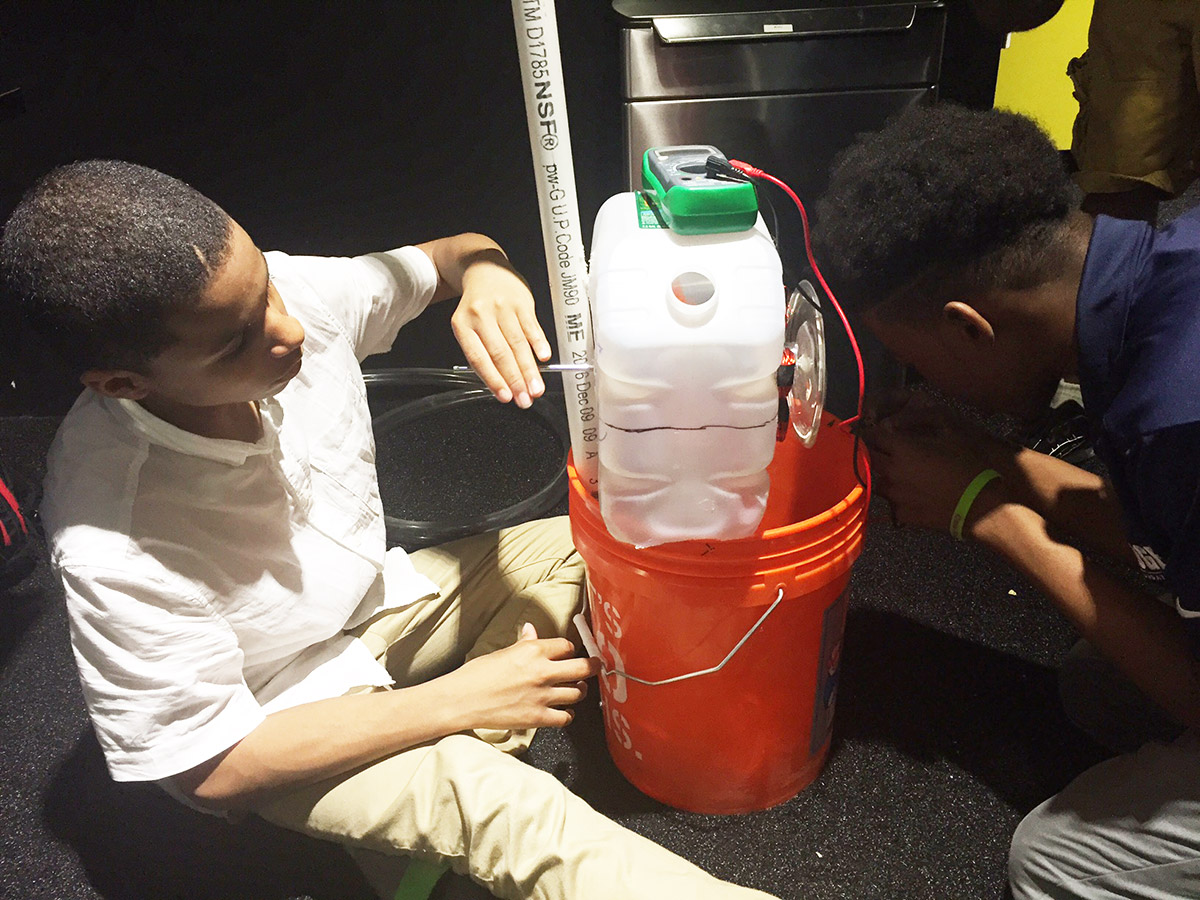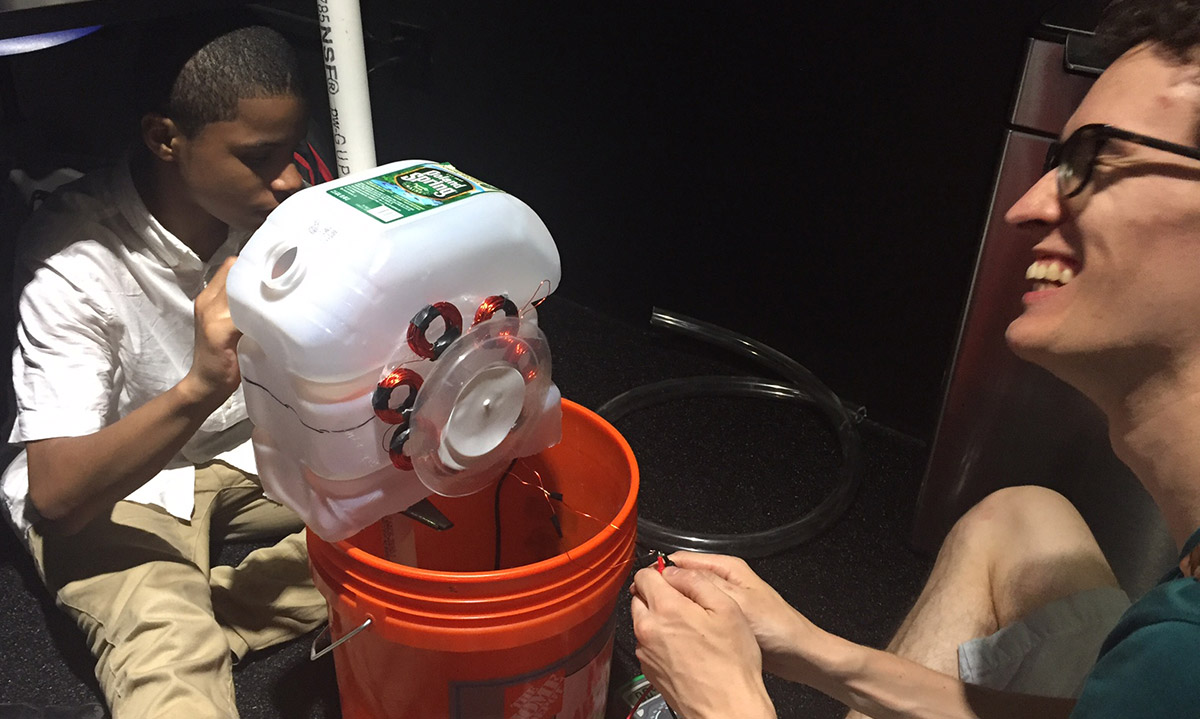By Charlie Cohen, STEM Program Assistant
One of the fundamental problems facing remote villages in Africa is the lack of reliable electricity.
The villages are often many miles from the nearest road, so more conventional means of power generation (coal, oil, wood) are completely out of reach. This limits them in many ways. For example, working past sunset is impossible, and communicating with nearby villages must be done in person.
To address this problem, a group of our after school students recently set out to devise an instrument that could generate power using available water resources. We plan to exhibit our clean energy machine at The Bridge Golf Foundation’s Water Fair, which we are producing in partnership with the Columbia Water Center.
Starting from scratch, our team of Alejandro Martinez, Jaden Jackson, Blake Wilson, Chris Chatman and Kevin Figuero learned the fundamentals of circuit theory and electrical engineering. Aided by in-house tools like our Snap Circuits circuit board, the team learned the basics of what makes a circuit, and the difference between series and parallel resistors. Using the Falstad Circuit Simulator, we learned the difference between direct and alternating current. We also made sure to examine the theory of electromagnetic induction, as that would play a key role in the generation of electricity.

A look inside the generator at the turbine, designed by Alejandro Martinez and printed on our MakerBot Replicator 3D printer.
Next up was the construction. After exploring a few templates we found online, we were able to piece together what we would need to construct a hydroelectric generator that would fit in a bucket. After a quick Home Depot trip and a few Amazon purchases, we had everything we would need to get started. Each team member was eager to participate, whether it was Chris and Blake rolling the solenoids, Jaden gluing the magnets in place, or Kevin crafting the housing to put it all together.
Soon enough, we had our first generation water generator.
Next we needed to perfect the design. This involved adding more solenoids and stronger magnets, and lubricating the axle. But the biggest modification we made was to design and create our own turbine spinner using The Bridge Golf Learning Center’s MakerBot Replicator 3D printer.
Alejandro’s turbine design won out by being both geometrically efficient and aesthetically interesting, as well as a major improvement over our original template’s “spoon in a cork” design.
We’re going to finish putting it all together this week. Come to the Water Fair on June 3rd to see just how much power we can generate using our hydroelectric generator in a bucket.

